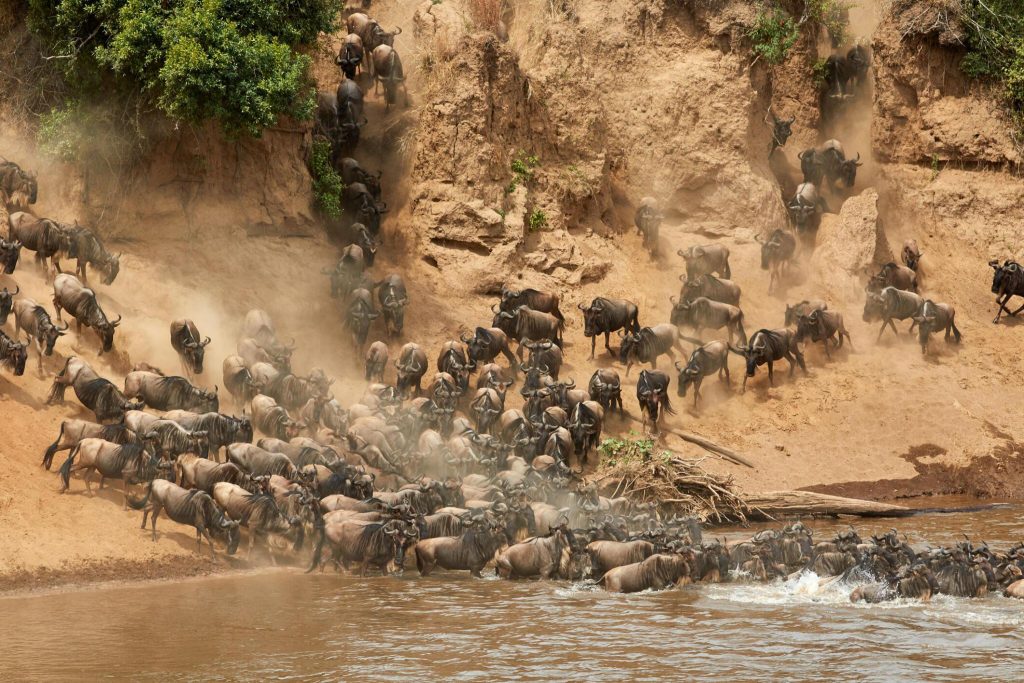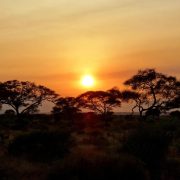
The greatest Wildebeest Migration in Serengeti National Park
The Great Wildebeest Migration in Serengeti National Park is one of the most awe-inspiring natural spectacles on the planet. This annual event draws wildlife enthusiasts, photographers, and adventurers from around the world, eager to witness the dramatic and life-affirming journey of over two million wildebeest, zebras, and gazelles.

What is the Great Wildebeest Migration?
The Great Migration is a continuous, cyclical movement of herbivores across the Serengeti-Mara ecosystem, which spans Tanzania and Kenya. It is driven by the quest for fresh grazing and water, as the animals follow a pattern that has been established over millennia. The migration is not just a journey but a remarkable survival story that involves challenges, dangers, and incredible displays of animal behavior.
Key Phases of the Migration
- Calving Season (January to March)
- Location: Southern Serengeti and Ndutu Area
- Description: The migration begins with the calving season in the southern Serengeti, where the wildebeest gather to give birth on the nutrient-rich grasslands. This period sees the birth of around 500,000 calves in a short span of time, creating a dramatic scene of thousands of newborns and attracting predators like lions and hyenas. The abundance of prey also leads to intense predator-prey interactions.
- Grazing and Northward Movement (April to June)
- Location: Central Serengeti and Western Serengeti
- Description: As the grasslands of the south begin to dry out, the herds move northward in search of greener pastures. This phase involves a significant increase in grazing and is characterized by large herds moving across the Serengeti’s vast plains. The migration routes vary, with some herds taking more central or western paths.
- River Crossings (July to September)
- Location: Northern Serengeti and Maasai Mara (Kenya)
- Description: The most dramatic phase of the migration occurs when the herds reach the Mara River. Here, they face the perilous task of crossing the river, which is often teeming with crocodiles. The river crossings are a spectacle of raw nature, with dramatic scenes of wildebeest plunging into the water, struggling to reach the other side, and dealing with the dangers posed by predators.
- Return South (October to December)
- Location: Maasai Mara and Southern Serengeti
- Description: After the river crossings, the herds gradually make their way back south towards the Serengeti, following the rain patterns and the growth of fresh grass. The return journey is characterized by less dramatic river crossings but offers opportunities to witness the herds reuniting and preparing for the next calving season.
Why Witness the Great Migration?
- Epic Wildlife Encounters: The migration offers some of the best wildlife viewing opportunities in Africa. Witnessing thousands of wildebeest, zebras, and gazelles in motion is a breathtaking experience, and the accompanying predator action adds to the excitement.
- Scenic Beauty: The Serengeti’s landscapes, from vast open plains to dramatic river crossings, provide stunning backdrops for this incredible natural event. The changing scenery throughout the migration adds to the visual splendor.
- Photographic Opportunities: The migration presents unparalleled opportunities for wildlife photography, capturing everything from the intensity of the river crossings to the serene beauty of the calving season.
- Conservation Awareness: Witnessing the migration helps raise awareness about the importance of conserving these incredible ecosystems. The Serengeti-Mara ecosystem is vital for the survival of numerous species, and experiencing it firsthand fosters a greater appreciation for conservation efforts.
How to Experience the Migration
To fully experience the Great Wildebeest Migration, consider these tips:
- Plan Ahead: The migration follows a roughly predictable pattern, but specific timings can vary. Plan your visit according to the phases of the migration you wish to witness.
- Choose the Right Safari: Opt for a safari with experienced guides who know the migration routes and can provide insightful commentary on the wildlife and landscapes.
- Prepare for Adventure: The migration involves travel through remote areas and varied terrain. Be prepared for a rugged but rewarding adventure.
Conclusion
The Great Wildebeest Migration in Serengeti National Park is a natural phenomenon like no other. It showcases the raw power and beauty of nature, offering unforgettable experiences and a profound connection to the wild. Whether you’re witnessing the calving season, the dramatic river crossings, or the herds’ return journey, the migration is a testament to the resilience and splendor of wildlife.
Embark on this incredible adventure with Summerwinter Adventures and witness the magic of the Great Migration firsthand. Let us guide you through this extraordinary journey and help you create memories that will last a lifetime.




